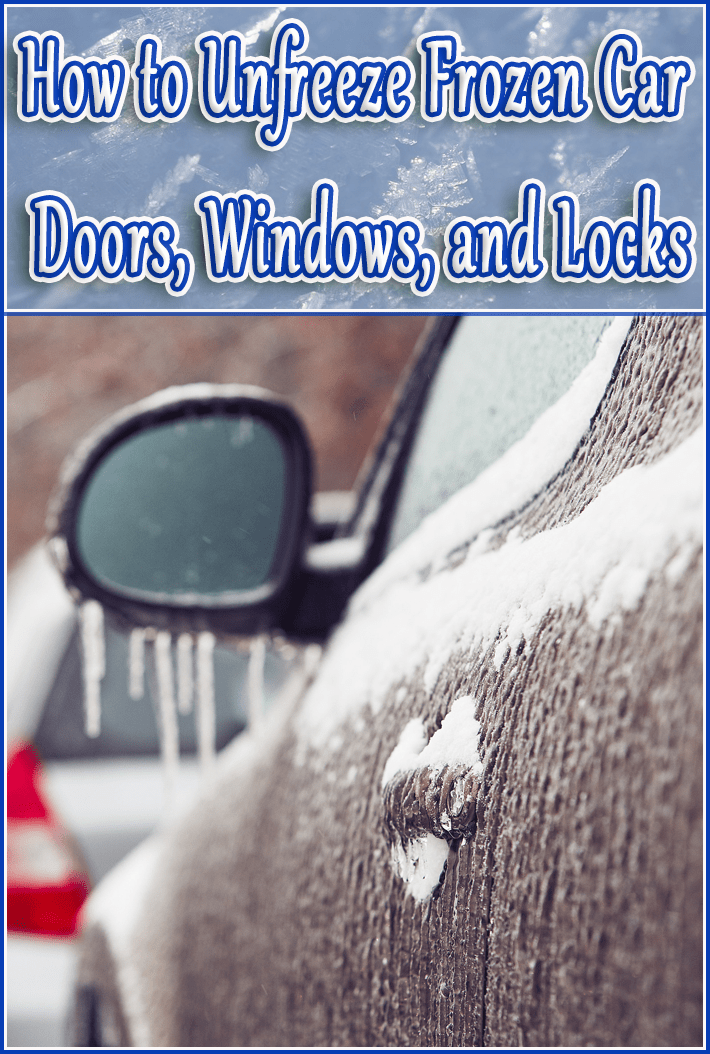
There are several ways to unfreeze frozen car doors, below are a few things you can do to melt the ice away and get on with your day.
Frozen, icy car windows create a hazard when attempting to drive during the cold months and require thorough removal. There are many methods for defrosting and de-icing car windows; unfortunately many of them may crack or shatter your windows.
We’ve all tried rolling our automatic windows down to clear off the snow and frost. Sometimes, they can actually be frozen and come off track in trying to do so. Winter and the accompanying bitter winds can freeze car door locks, windows and doors.
How to Unfreeze Frozen Car Doors, Windows, and Locks
Choose only safe and appropriate methods for de-icing and unfreezing windows. Use these quick and easy tips to combat the ice.
Frozen Door Locks:
Nothing can be more frustrating than finding your car door locks frozen when you are ready to leave. One way to prevent this from happening is to place a magnet over the lock overnight.
Another way to prevent frozen locks is to dip your key into Vaseline, put it into the lock, and turn the lock back and forth a few times. Repeat this to make sure the Vaseline is well-distributed onto the parts of the lock. This method should be done once a week during winter months. WD-40 can also prevent locks from freezing.
If you find the lock already frozen, you can spay de-icer into the lock. It is good to keep a few cans handy in the winter months.
If you do not have de-icer, heating up the key could offer a quick fix. Hold the key with an oven mitt or tongs and heat the key with a lighter or matches. The heated key inserted into the lock should melt the ice. If the key is made of only metal, you can heat the key while it is in the lock. Do not try this with keys that have plastic at the top.
As a last resort when all else fails, you can use a hair dryer. Plug the dryer into an extension cord, and direct the air at the lock. Make sure to block any wind with your body. When using this method, you can put the key into the lock to help direct the heat.
Frozen Power Windows:
When you push the button to roll down your power window and it does not go down, do not keep pushing the button. The window is likely frozen to the weather strip on the outside of the car. If you keep trying to roll the window down, you can damage the window motor, and this could be expensive to repair.
The best thing to do is to insert a credit card or plastic comb between the window and the strip. This should help to break up the ice. Remove the ice as you go.
If you can, wait until the car interior warms up. The ice should then melt shortly.
Frozen Car Door:
You can prevent your door from freezing shut by spraying the door frame with spray cooking lubricant like Pam.
If you have not treated the doors and find them frozen shut, try these steps to unfreeze them.
First, try all of the doors (including the hatch) to find the one least frozen. Do not try to force a frozen door open. This can damage the seal around the door.
Next, while wearing gloves, hit the ice with the palms of your hands, and remove the ice as it breaks.
If this method does not work, you can use a hair dryer to melt the ice.
Defroster:
- Start the car and allow it to run without the defroster or heater on for a minimum of five minutes.
- Turn the heat on low and turn the defroster on.
- Allow the defroster to run for five minutes.
- Increase the heater temperature to medium and allow it to run for five minutes.
- Turn the heat up to the high setting and allow it to run until ice melts.
Scraper:
- Use a plastic scraper intended for ice removal. Do not use metal because it will scratch car windows. A plastic spatula or sturdy plastic tumbler works if an ice scraper is not available.
- Begin at a corner of the window and scrape away ice, working your way to the middle.
- Continue to scrape from the edges towards the center until windows are free of ice. This method works best in conjunction with a car defroster.
White Vinegar:
- Mix 3/4-cup white vinegar with 1/4-cup room temperature water in a spray bottle.
- Spray the mixture onto icy car windows.
- Scrape the melting ice off the windows with an ice scraper.
Isopropyl Alcohol:
- Mix 3/4-cup isopropyl alcohol with 1/4-cup room temperature water in a spray bottle.
- Spray the ice liberally with the mixture.
- Allow the mixture to sit for two to three minutes.
- Spray the windows again with the mixture and scrape away melting ice build-up.
Chemical De-icers:
- Spray the windows with a canned de-icer, which has an active ingredient of polypropylene glycol, a derivative of ethylene oxide.
- Allow the glycol to melt the ice, which is almost immediate.
- Push the slush off the windows with a squeegee.
Tip:
Pick windshield wipers up and off your windshield every time you get out of the car to prevent the wipers from freezing to your windshield.
Warnings:
- Open the garage door if the car is idling with the defroster on inside of a garage.
- Do not use salt on car windows; salt causes pitting on the glass surface.
- Do not pour hot water on a cold, frozen window, the glass is will shatter from the extreme change in temperature.
- Do not bang or hit the windows in an attempt to break ice; the frozen windows will break because they become more fragile in cold weather.
- Do not use a hand-held hair dryer, heat gun or torch; sudden temperature changes will crack the car windows.
- Never drive a car until all windows are clear of ice or any other obstruction.
How to Defrost Frozen Car Windows
For drivers in the northern latitudes, ice buildup is more than just a seasonal inconvenience. Ice can easily build to more than an inch thick around the base of your windshield, side windows, hood and trunk lid. Not only are such sheets of ice difficult to remove, doing so incorrectly can damage your glass and paint. Airports use special deicing fluids to remove such buildup from airplane wings and to prevent further icing while the airplane cruises at high altitudes. Similar deicers are commonly available at auto parts stores, but you can easily make your own with a few inexpensive household chemicals.
1. Combine a 60/40 mixture of propylene-glycol-based (PG) antifreeze and water in a spray bottle. You can use a standard ethylene-glycol-based (EG) antifreeze, but PG antifreeze is far less toxic to people and animals. Propelene glycol is an organic alcohol compound that dissolves the hydrogen bonds that hold the ice crystals together. Standard rubbing alcohol will dissolve ice as well, but PG works better and lasts longer.
2. Add standard dish soap to the mixture at a 10-to-1 ratio. If you have 10 ounces of water/antifreeze, add 1 ounce of dish detergent. Dish detergent is a surfactant, meaning that it lowers the surface tension of any fluid it touches. Lowering the surface tension will allow the melted ice to more easily slough off the windows.
3. Allow the soap/antifreeze/water solution to sit in your home at night. The warmer the mixture is the quicker it will work, but it shouldn’t be any warmer than about 80 degrees or you risk cracking the freezing-cold glass through thermal shock.
Please follow us on Facebook Page and enjoy our collection of recipes, crafts, fitness, health tips, gardening, DIY and more…
Source: Coffee Break Time / itstillruns.com / the2mortgageguys.com

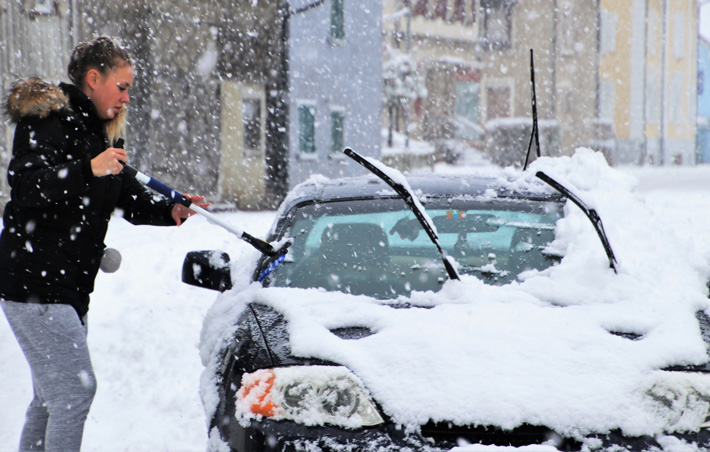
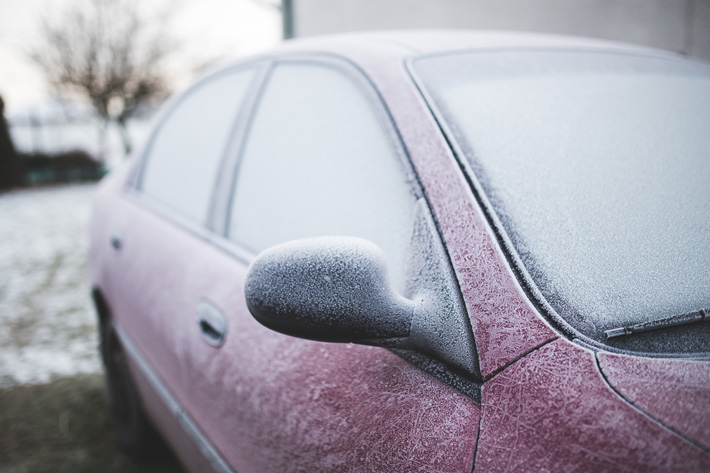
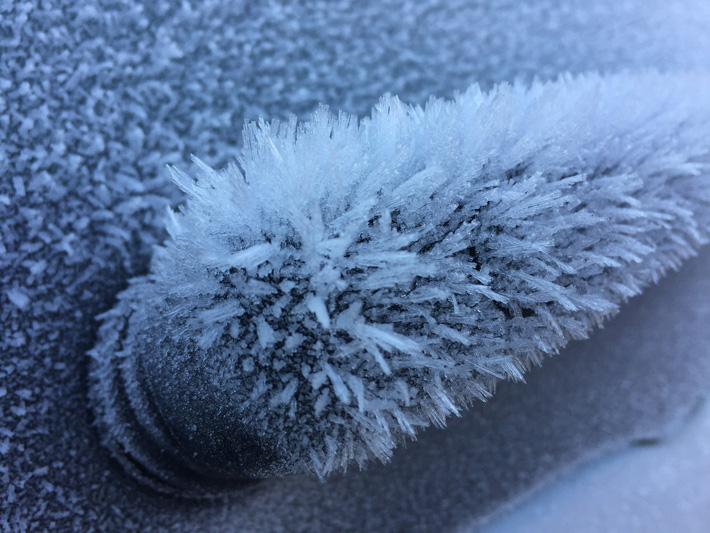
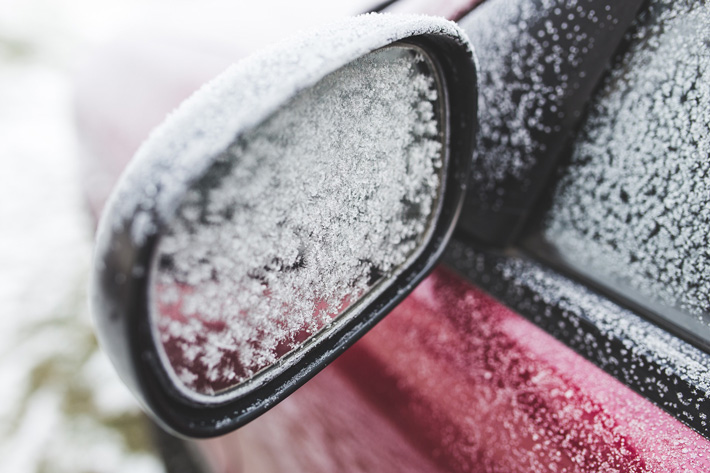


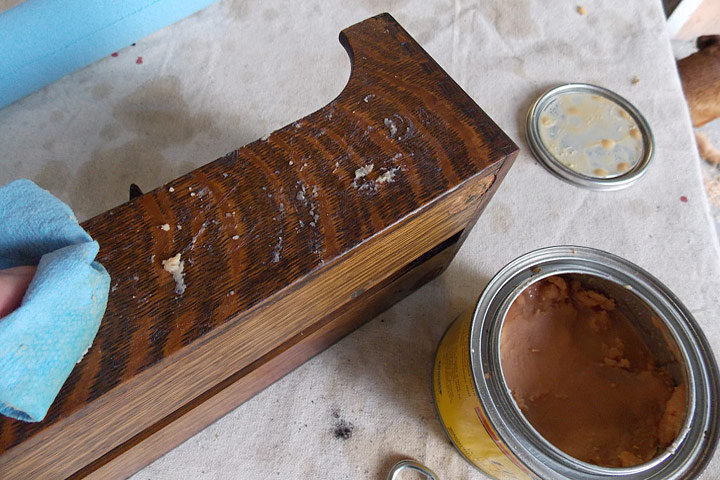
Leave a Reply